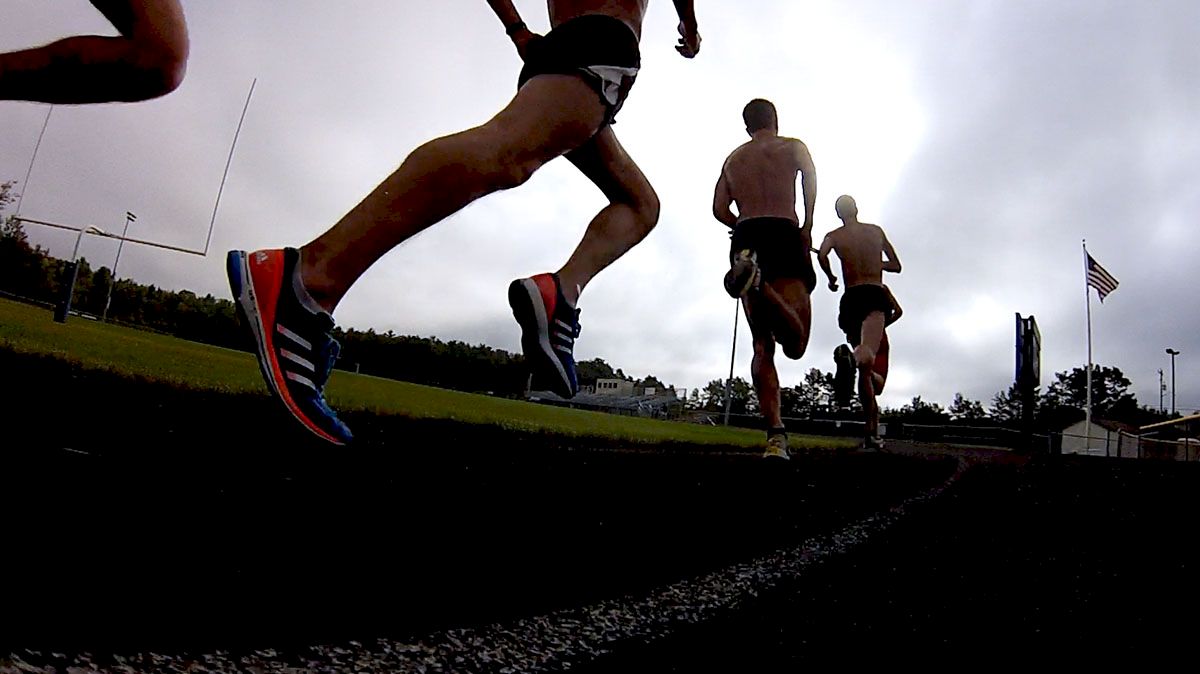The Risks of Gene Doping by Danny Mackey
The Risks of Gene Doping by Danny Mackey

The Risks of Gene Doping
(3rd in a 4 part series looking at gene doping)
By Danny Mackey M.S.
(note: that picture heading for the article is a classic one of a rat’s muscle composition before and after taking a PED)
Since I post my training log on the site, I will start out with a little about my running. I just go to my blood tests back yesterday and my red blood cell count is almost “normal” but my testosterone is double what is was in May (but still on the low end of normal). Also, my body composition is changing back to normal and I have lost about 10 lbs since July. The interesting application relating to the blood work and weight is I am not as sore the day after a hard workout, my heart rate at a given workload is lower, and I actually shave my face more than once a week. There is still a lot of work to be done, but the past 1 ½ weeks have been the best running I have had in 2 years. Which is not something to brag about (it’s almost more sad than anything) but a positive slope is positive, not negative so I’ll take it. Cross Nationals is December 13th, I have 2 races between now and then (8k XC next weekend and 5k road race on Thanksgiving), and about 5 weeks to bust my ass to get a little more fit.
So what we are going to look at here is focus on the risks of gene doping. I only give 2 specific examples as to not overload the information, but that take home point should be evident.
Gene doping to potential athletes may look like the instant ticket to the victory stand. As inviting and easy as gene doping may seem, there are risks (there always consequences). Gene doping is a major concern in athletics, but for gene doping to work a complete understanding of the human genome needs to be met. As a human map of performance related genes and disease related genes are drawn up, so is the scientist’s understanding of the role of various genes in targeting athletic performance. The increased knowledge also expands the potential targets for gene doping (14). The major problem with gene doping is that even though there is a wide variety of phenotypes that are associated with human fitness and performance, the gene map is still very young. Furthermore, human studies have not shown positive results. Despite lack of complete understanding of gene doping, it is expected that athletes will attempt gene doping without waiting for full approval of gene delivery trials for therapeutic purposes (14). Another hazard for the athletes is that gene doping likely to be done in secret, with limited protective actions since it is illegal. This lack of understanding leads to potential risks for the athletes who are daring enough to try gene doping.
The vector (remember the previous articles) used for gene doping poses an immediate limitation and risk. The adenoviruses used as vectors are powerful virus which can trigger a systematic auto-immune response which may eventually kill an athlete. The integration of viral vectors into the human increases the risk of mutagenesis (15). Unregulated cell growth, toxicity due to chronic over expression of the growth factor protein and the development of a malignancy are possible. Manipulating HIFs can have problems because they stimulate genes that encode angiogenetic molecules and proteins involved in cell growth and division which may promote cancer growth and spread (16).
A specific limitation in gene doping used to increase EPO levels in already healthy, fit athletes will increase the red blood cell count and their already high hematocrit. These high levels will make the blood more viscous and increase the risk of heart attack and paralysis. Injecting the gene for EPO production has not shown a way to be regulated, so an athlete may not be able to decrease production when needed. Gene doping for EPO can mean continuous production of red blood cells (17). In 1998 scientist transferred EPO genes into monkeys and baboons and the animals red blood cell count doubled within 10 weeks causing the doctors to remove blood in order to keep the animals’ hearts from failing (9). So as a possible solution, the athletes will use blood thinning drugs, which can lead to other health problems (see… there are always consequences).
The genes used to improve skeletal muscle strength and size may not kill an athlete but other injury rates may increase as another possible risk. Gene doping with IGF-1 or myostatin may lead to large muscles that may overload ligaments, tendons and bones. The human body needs time to adapt to different stresses, if one part of the body, like skeletal muscle, adapts faster then other parts of the body damaging injuries may result.
We may hope this would deter cheating but as we well know that is not the case. In terms of comments and discussion below, I would be interested to hear what people think the mental perspective of a potential gene doping cheater would take?